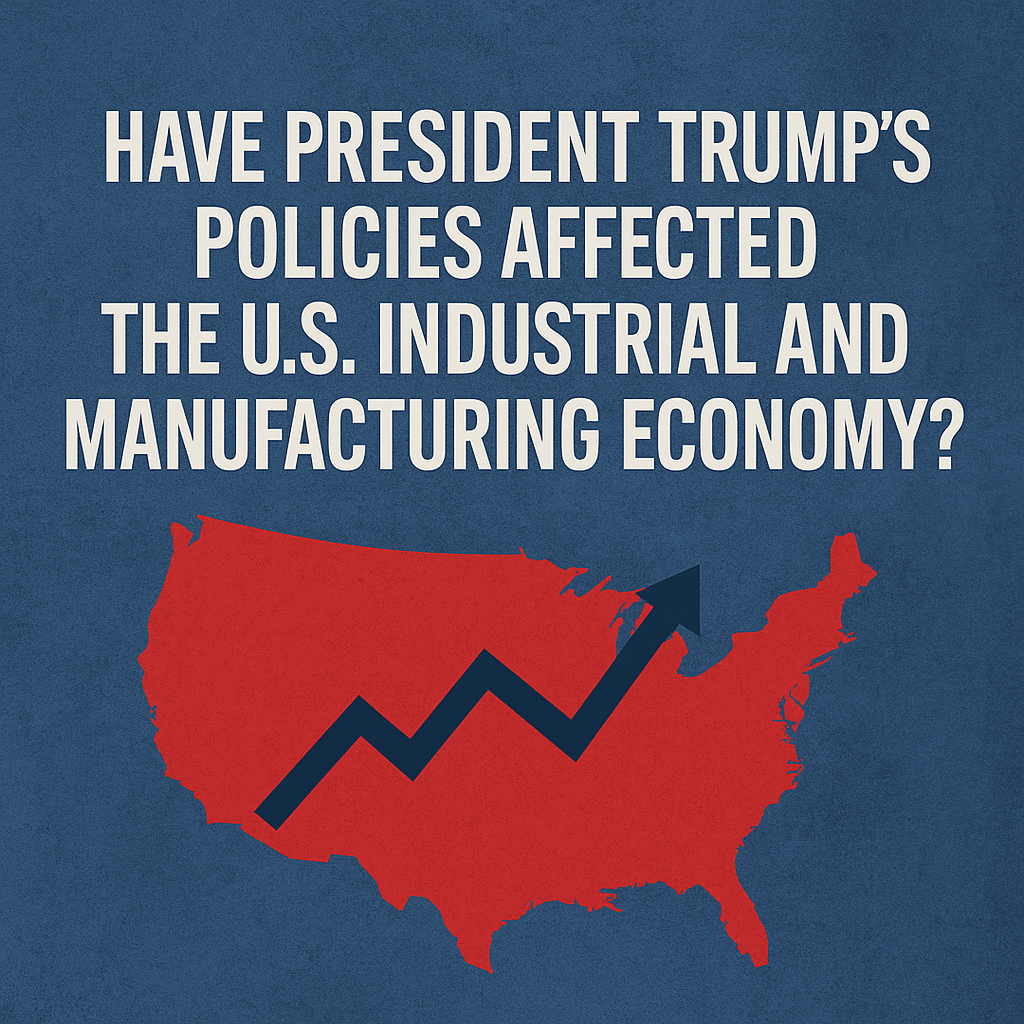Blog Blog
Have President Trump’s Policies Affected the U.S. Industrial and Manufacturing Economy?
September 9, 2025
Have President Trump’s Policies Affected the U.S. Industrial and Manufacturing Economy?
September 9, 2025Aiming to Restore American Industry
President Trump has positioned himself as a champion of U.S. manufacturing, promising to reinvigorate it through aggressive tariffs, reshoring incentives, and tough trade negotiations. His so-called “MAGAnomics” includes both tax reforms and protectionist trade policies designed to push companies back to America.
But has this strategy delivered? The evidence suggests a far more complicated and troubling outcome for U.S. industry.
1. Manufacturing Job Losses & Economic Contraction
- Tariff-driven job declines: Since the April 2025 “Liberation Day” tariff announcement, the manufacturing sector lost approximately 42,000 jobs, with job openings and new hires dropping by 76,000 and 18,000, respectively (Center for American Progress, Common Dreams).
- Latest data confirms further erosion: In August 2025 alone, the U.S. shed 12,000 manufacturing jobs, marking four consecutive months of decline and pushing employment to levels not seen since early 2022 (Investopedia, The Daily Beast).
- Professional consensus: Analysts across sources, such as ISM, note that U.S. manufacturing contracted for the sixth straight month in August, with continued declines in employment and order volumes, largely due to tariff-induced cost pressures (MarketWatch).
2. Tariffs: Raising Costs, Not Reviving Output
- Input costs outweigh benefits: U.S. manufacturers, especially in industries like vehicle production, depend heavily on imported intermediate goods. Tariffs on these inputs raise their production costs, undermining competitiveness despite the intent to protect domestic industry.
- Growth uncertainty hampers investment: Reports project that prolonged economic uncertainty tied to tariffs could slash manufacturing investment by over $490 billion by 2029, driven by hesitancy from industry leaders.
- GDP effects and trade deficits: Tariff-induced retaliation may cost the U.S. economy 0.2% of GDP and $146 billion in revenue over a decade (Tax Foundation). The structural trade deficit, a longstanding challenge, increased significantly under earlier Trump policies.
3. Broader Economic Stress
- Manufacturing stagnation: The sector, once a potential growth driver, continues to underperform. Though manufacturing makes up approximately $2.9 trillion of the economy, output growth remains tightly linked to broader business cycles, with little sustained upward momentum.
- Recession warnings mount: Despite Trump’s promises of a “Golden Age,” persistent job weakness, high inflation, and economic instability have raised recession risks. Analysts estimate a nearly 50% probability of a downturn, amplified by tariff and labor policy impacts (The Washington Post, The New Yorker).
4. Mixed Signals: Investment Surges Amid Trade Tensions
While manufacturing job data paints a bleak picture, there’s another side: significant private-sector investments in U.S.-based production and infrastructure. Companies like Apple, NVIDIA, IBM, Ford, GM, and others have announced massive plans, ranging from $100 billion to $600 billion, to boost domestic manufacturing, AI infrastructure, and chip production (The White House).
These investments offer a glimmer of hope, but they are not direct results of tariff policies. Rather, they align more with broader corporate strategies and federal incentives.
5. Final Assessment: Did Trump’s Policies Deliver?
No—the data suggest that his trade and tariff strategies have, so far, produced more harm than help for U.S. manufacturing.
- Instead of fueling a rebound, tariffs have elevated costs and injected uncertainty, contributing to job losses and shrinking industrial activity.
- Investment has shifted, not necessarily because of Trump’s policies, but due to unrelated corporate decisions and tech infrastructure trends.
Key Takeaways
| Effect | Outcome Summary |
|---|---|
| Job Losses | Manufacturing employment dropped sharply, 42,000 since April 2025, including 12,000 in August alone. |
| Sector Contraction | ISM data shows six consecutive months below-growth in manufacturing activities. |
| Tariff Impacts | Higher input costs, investment delays, negative GDP and revenue projections. |
| Economic Risk | Increased recession risk amid shrinking factory jobs and economic uncertainty. |
| Investment Trends | Significant private investment in U.S. production, but not clearly linked to tariffs. |
At present, President Trump’s industrial agenda centered on tariffs and protectionism has not succeeded in revitalizing U.S. manufacturing. Instead, elevated costs, hiring hesitation, reduced orders, and recession fears have cast long shadows over the sector.
However, robust private investment does offer a path forward. For a genuine industrial resurgence, policymakers will need to complement these efforts with predictable trade policies, infrastructure investments, workforce development, and domestic supply chain building.